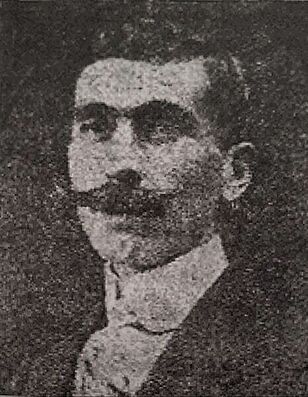
Stavros Xygalas.
Stavros Xygalas (b.? - 1921) was from Fatsa, a town on the northern coast of Asia Minor in present-day Türkiye. Around the beginning of the 20th century, the population of Fatsa was 3,500 of which 2,000 were Greeks, 1,000 were Turks and 500 were Armenians. Today Fatsa is a city of over 100,000. Towards the end of 1922, the Greeks were forced to abandon their homes and businesses and were expelled to Greece subsequent to the defeat of the Hellenic Army in Asia Minor. The treaty that dictated their expulsion was signed at Lausanne in 1923 and was erroneously called a Population Exchange Treaty.
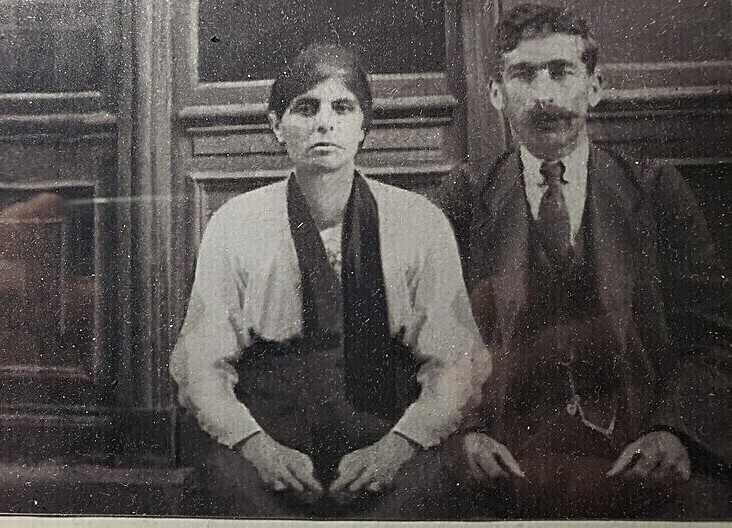
Stavros Xygalas with his wife Anna.
Stavros's family consisted of his wife Anna and his four children; Lefkothea (b. 1910), Euripides (b. 1913), Nikos (b. 1915) and Venizelos (b. circa 1919). Venizelos's name was changed to Francescos by his parents in fear of reprisals by the Kemalists since it was Eleftherios Venizelos, the Prime Minister of Greece who sent Greek troops to Asia Minor in 1919.
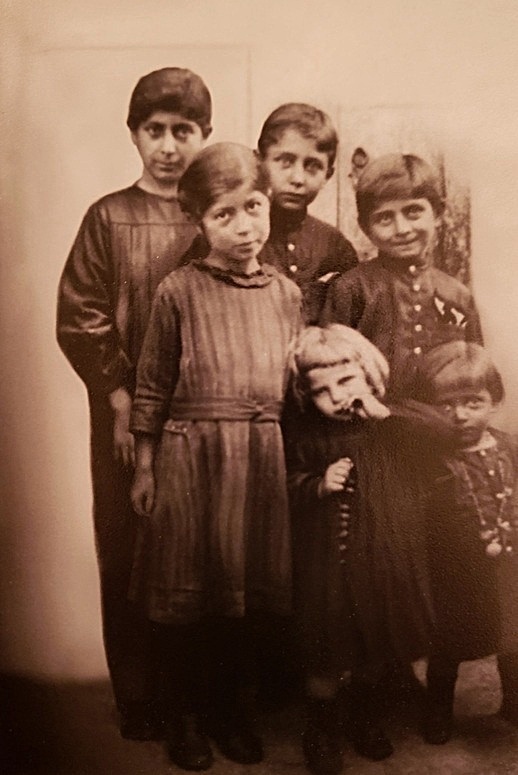
The children of Stavros and Anna Xygalas with two of their relatives. The Xygalas children are the three standing in the back row and the blonde child at the front.
Stavros and his two brothers, Alcibiades and Miltiades, owned and operated a successful general goods business based in Fatsa, with trade offices in Constantinople and Samsun. Stavros ran the business in Fatsa, Alcibiades in Constantinople and Miltiades in Samsun.
In 1917, the Xygalas family was relocated to Tokat and Amasya in the interior of Turkey, however, they survived and returned to their homes after WW1. In 1920, Militiades Xygalas was relocated to Kayseri deep in the interior of Turkey. Despite all this, the family continued with their lives as best they could, until 1921.
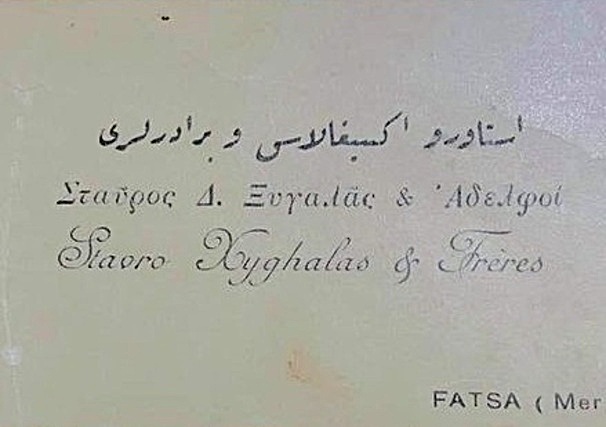
A business card of the Xygalas family business printed in Greek, French and Ottoman Turkish. The card reads "Stavros D. Xygalas and Brothers. Fatsa...".
On March 25, 1921 Stavros was arrested by the Kemalist police while on his way to the market to buy fish (hampsia) for the family dinner. He was subsequently jailed then transported to Amasya where on September 21, 1921 he was executed along with many other Greeks from various parts of Pontus. The charge was sedition against the Kemalist regime. The total number of Pontic Greek community leaders who were sentenced and executed in Amasya was approximately 175. All of them were denied the right of representation by an attorney since their fate had been decided at the time of their arrest. The Amasya courts were called Independence Courts and were established by the Kemalist regime to exterminate the leadership of the Greek community. They were essentially Kangaroo courts.

The Xygalas family home which was confiscated in 1922 as it appeared in an old photo and how it looks today. The home is located on Resadiye street and was still inhabited in 2015.
In November 1922, as mentioned above, the family like most Greeks in Asia Minor were expelled to Greece, however without Stavros and Venizelos. Venizelos had passed away at only a few years of age. The family then settled in Drama, Greece.
In Greece, son Euripides later joined the monastic community of Mount Athos and became an Abbot. While there, his name was changed to Petros for ecclesiastical reasons. In the early 1950s he became the first Abbot of the distinguished Panagia Soumela monastery in Veria, Greece. Meanwhile Nikos owned a business in Drama with his brother-in-law Ioannis.
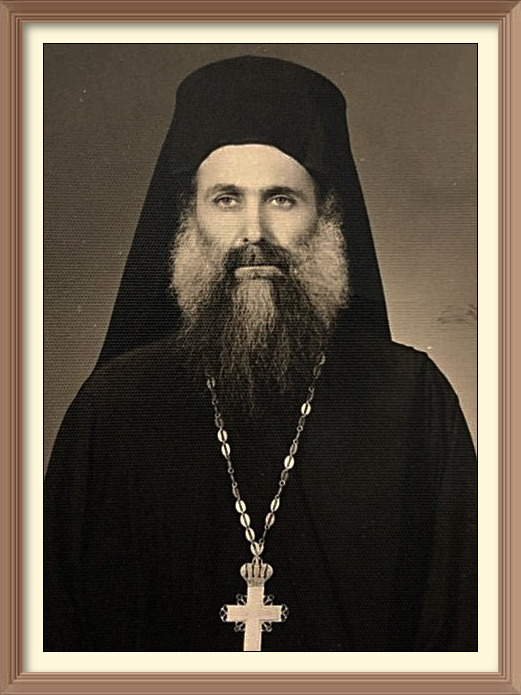
Abbot Petros Theofylaktou.
Due to the family’s lack of a breadwinner, Lefkothea had to work from the age of 16 years in the local tobacco factories to support the family. Later, both Lefkothea and Nikos married and each led happy family lives with children of their own.
In 1936, daughter Lefkothea married Ioannis Koktzoglou in Drama and had four children. Ioannis was one of the three survivors of the May 1921 massacre of Ada, a village near Samsun. Ioannis was born around 1905 and was 16 at the time of the massacre. He had three brothers and a sister. His mother died when he was around six months old. In 1914, his father was drafted into the Ottoman Army labour battalions and never returned. By the age of ten, Ioannis had been orphaned of both parents. His brothers were killed by the Turks under various circumstances and his sister died from malnutrition. Ioannis became a goat shepherd and at one stage changed his name to Mustafa to avoid harassment.
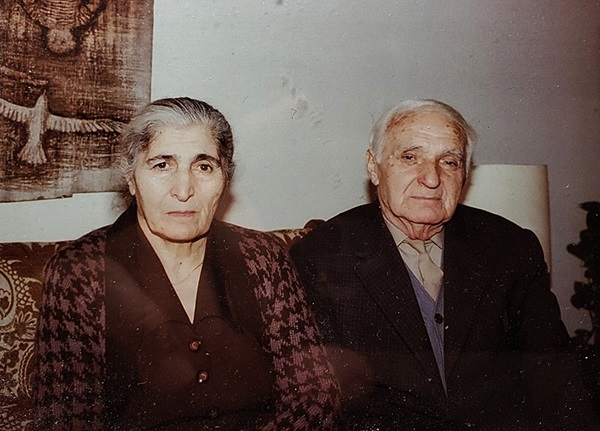
Ioannis Koktzoglou and wife Lefkothea.
On the day of the massacre, Ioannis had left the village and joined his uncle who was heading up a Greek guerilla group in the nearby hills after learning that Turkish troops were on their way from Samsun. He returned to the village the day after the massacre and witnessed the aftermath. Ioannis' memory of the massacre was likely based on the recollections of two women who were the only survivors. Ioannis recalled:
On May 15, 1921, thousands of irregular Turkish troops surrounded the village forming seven rings around it. At 7.30pm, they gathered all the inhabitants of the village. They killed some of them outright. They forced the rest into a number of houses, poured fuel on the houses and set them on fire. They shot those attempting to flee and threw them back into the fire. The Turkish troops had another method to kill those who tried to escape from the fire. They soaked a rope in oil and put it around their victims' neck. Two men would pull on the rope, each holding one end. They then stabbed the victim in the forehead or abdomen with a bayonet. Finally they threw the dying victim back into the fire.
Three hundred and forty people were massacred in total at Ada and only three people survived, one of them being Ioannis. Details of his testimony can be found in a book titled The Greek Genocide in American Naval War Diaries, by Robert Shenk and Savvas Koktzoglou. Details can also be found in Antonios Gavriilidis' book titled Pages from the Black National Calamity of Pontus. Savvas was one of the four children of Ioannis and Lefkothea, and dedicated the book to Stavros and his parents. In Greece, Ioannis ran a business and was very active in raising awareness on the Greek Genocide.
More Information about the Ada massacre can be found at:
- Gavriilidis, I. The Dark National Tragedy of Pontus 1914-1922. Athens 1924, pages, 78, 89, 161.
- Koktzoglou, S, Shenk, R. The Greek Genocide in American Naval War Diaries, University of New Orleans Press, 2020. pp. 148-150.
- Yeghiayan, Vartkes. British reports on Ethnic Cleansing in Anatolia 1919-1922: The Armenian-Greek Section. Center for Armenian Remembrance (CAR), 2007. p.211.



